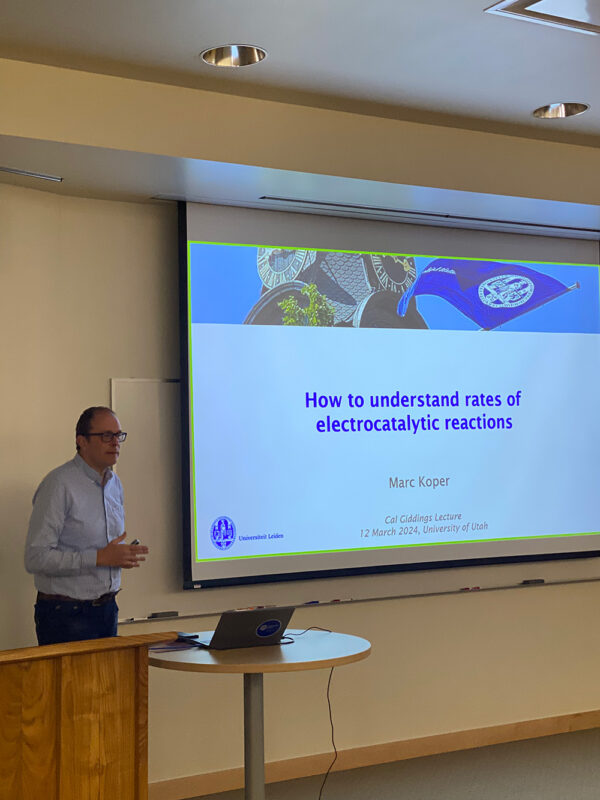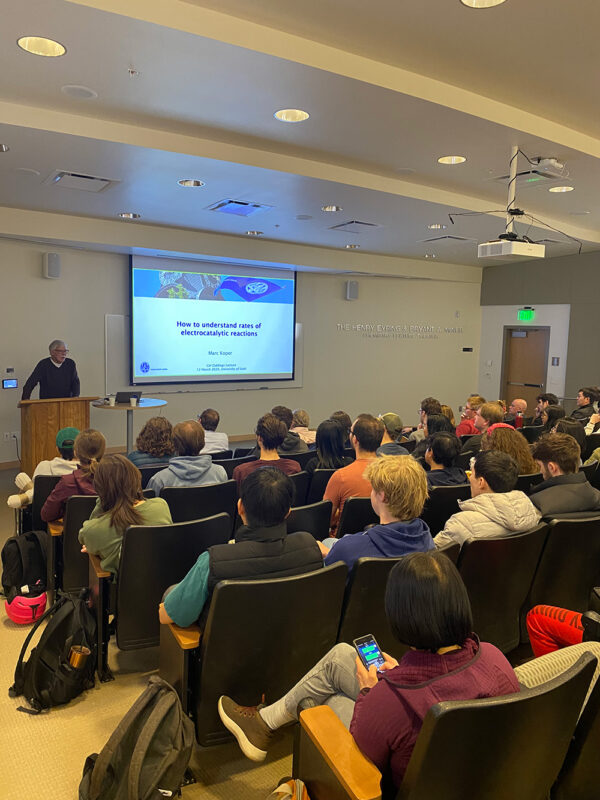
 |
 |
Professor J. Calvin Giddings was a graduate of Brigham Young University, earned his Ph.D. under Henry Eyring at the University of Utah in 1954, and did postdoctoral work at the University of Wisconsin. He joined the faculty of the University of Utah in 1957. Among analytical chemists, Professor Giddings was best known as a pioneer in chromatography and separations, particularly in theory and teaching. Giddings established the journal Separation Science and Technology and was editor for over 30 years. He authored over 400 scientific publications, including the theoretical landmark books Dynamics of Chromatography, and Unified Separation Science, widely used in graduate-level separation courses. He also invented Field Flow Fractionation and led the way in its development and application.
Read here for more about Professor J. Calvin Giddings:
Giddings, M.C., Giddings, S.P., Clark, L.J., Fuhriman, I.T., Packer, R.G., Thomson, W.C., Sindelar, J., Brown, P.R., Grushka, E., Knox, J.H., Novotny, M.V., Lochmueller, C.H., Ettre, L.S., Lee, M.L., Eyring, T., Kirkland, J., Karger, B.L., Yang, F.J., Martin, M., King, J.W., Thompson, G.H., Shin, H.K., Fuller, E.N., Wahlund, K.-G., Gardella, J.A., Jr., Reschiglian, P., Andreev, V.P. and Davis, J. (1997), Tributes to J. Calvin Giddings. J. Micro. Sep., 9: 123-150.
The Giddings Lecture this year will have 2 parts, both given by Marc Koper from Leiden University.

The first one will be held Monday, March 11:
The Giddings Lecture with Marc Koper, Leiden University
Monday, March 11, 2024, TBBC 4630 (4th floor Thatcher), 4PM
“How to make green hydrogen” by Marc Koper, Leiden University
Abstract: The mechanism of the electrochemical hydrogen evolution reaction is one of the oldest (and currently one of the hottest) topics in electrochemistry. Starting from the history of the subject, my talk will discuss the most recent molecular-level insights into what drives the rate and efficiency of this reaction. Apart from the nature of the catalyst surface, there is a crucial role of the nature of the proton donor and the composition of the (interfacial) electrolyte. This is true for both the rate of the elementary steps of hydrogen formation at lower current density, as well as for the nucleation, coalescence and removal of hydrogen bubbles at high current density.
Host: Henry White
The second one will be held Tuesday, March 12:
The Giddings Lecture with Marc Koper, Leiden University
Tuesday, March 12, 2024, TBBC 4630 (4th floor Thatcher), 10:45AM – 12:00PM
 |
 |
“How to understand rates of electrocatalytic reactions” by Marc Koper, Leiden University
Abstract: In this seminar, I will discuss the (kinetic) modeling of electrochemical and electrocatalytic reactions in relation to experimental data. There are many complicating factors determining the rate of electrocatalytic reactions that are not included in the traditional Butler-Volmer model. Starting from transition-state-theory and Marcus theory, I will attempt to systematically identify the complexities, and compare to relevant experiments in electrode kinetics and electrocatalysis. This includes the role of the statics and dynamics of the solvent, the role of “inert” ions in the double layer and the importance of the atomic-level electrode structure in that role, as well as the influence of electrode potential and temperature. I will also discuss the role of molecular or ab initio computational chemistry in elucidating the rate laws of electrocatalytic reactions.
Host: Henry White
